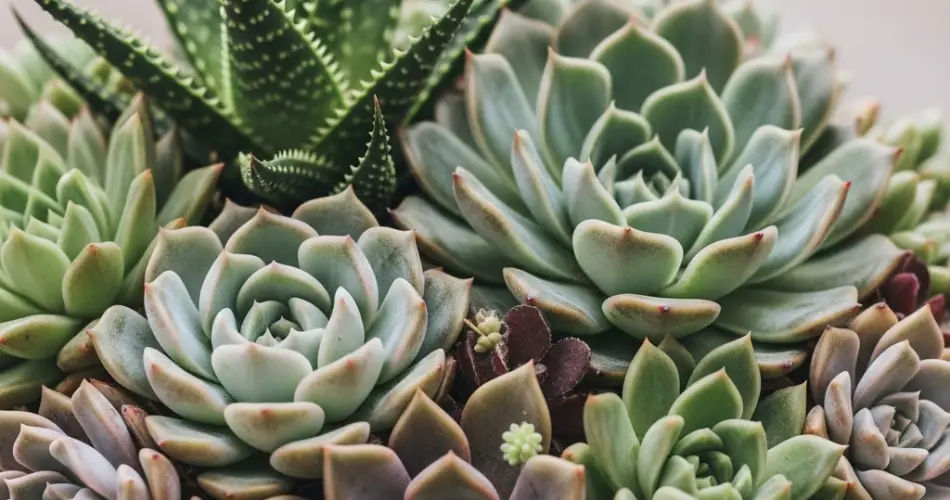Succulents have become wildly popular in recent years, and it’s easy to see why. These hardy plants are known for their unique shapes, vibrant colors, and low-maintenance care requirements, making them ideal for both beginners and experienced gardeners. If you’ve never gardened before but want to develop beautiful, healthy succulents, this guide will take you through all the essential steps—from choosing your plants to mastering care—without overwhelming you.
Why Choose Succulents?
Succulents store water in their leaves, stems, or roots, allowing them to survive in dry, arid conditions where other plants might struggle. This unique adaptation means they require less frequent watering and are more forgiving of occasional neglect. For beginners, succulents offer a wonderful introduction to gardening with minimal risk and maximum reward.
Selecting Your First Succulents
Starting with the right plants is key. Some succulents are easier to grow than others, especially if you’re new to gardening.
-
Recommended Beginner Varieties: Jade Plant, Aloe Vera, Echeveria, Haworthia, and Zebra Plant.
-
Where to Buy: Purchase healthy plants from reputable nurseries or garden centers. Avoid plants with signs of pests, disease, or severe damage.
If you prefer, you can also start succulents from cuttings or leaves, but buying young plants can be easier for absolute beginners.
Choosing the Right Containers and Soil
Succulents need containers with drainage holes to prevent waterlogging, which can lead to root rot.
-
Containers: Terracotta pots are ideal because they are porous and allow excess moisture to evaporate. However, plastic pots work as long as they have drainage holes.
-
Soil: Use a well-draining soil mix designed specifically for succulents and cacti. You can buy pre-mixed succulent soil or create your own by mixing regular potting soil with sand, perlite, or pumice.
Planting Succulents: Step-by-Step
-
Fill the pot: Add a layer of succulent soil to the pot.
-
Place the plant: Gently remove your succulent from its nursery pot and loosen any tightly bound roots.
-
Position the plant: Place the succulent in the new pot and fill around it with soil, pressing lightly to secure the plant.
-
Avoid watering immediately: Wait 2-3 days before watering to let any root damage heal and reduce the risk of rot.
Watering Succulents the Right Way
Watering is one of the biggest challenges for new succulent growers, but it’s simple once you understand their needs.
-
Water deeply but infrequently: When you water, soak the soil thoroughly until water drains from the bottom. Then allow the soil to dry out completely before watering again.
-
Frequency: Typically, watering once every 1-2 weeks works well, but this depends on your climate, pot size, and time of year.
-
Signs of Overwatering: Soft, mushy leaves, yellowing, or a foul smell from the soil.
-
Signs of Underwatering: Wrinkled or shriveled leaves.
Light Requirements for Healthy Succulents
Succulents generally love bright light but can suffer in intense, direct sunlight for prolonged periods, especially in very hot climates.
-
Ideal Lighting: Place succulents near south or east-facing windows indoors for 4-6 hours of bright, indirect light.
-
Avoid full afternoon sun: This can scorch the leaves, particularly for indoor plants.
-
Rotate regularly: Turn your plants occasionally to promote even growth and prevent them from leaning toward the light source.
Temperature and Humidity
Succulents prefer temperatures between 60°F and 80°F (15°C to 27°C). They tolerate cooler temperatures down to around 40°F (4°C), but avoid frost.
Low humidity environments are best, as succulents thrive in dry air. If you live in a humid climate, ensure good air circulation around your plants to prevent fungal issues.
Fertilizing Succulents
Succulents don’t require frequent feeding, but occasional fertilizing supports healthy growth.
-
Use a balanced, diluted fertilizer formulated for succulents or cacti.
-
Feed once a month during the growing season (spring and summer).
-
Avoid fertilizing during dormancy (fall and winter), as the plants aren’t actively growing.
Propagating Succulents Made Easy
One of the most rewarding aspects of growing succulents is propagation, which allows you to create new plants from leaves or cuttings.
-
Leaf propagation: Gently twist off a healthy leaf, let it dry and callous over for a few days, then place it on top of succulent soil. Roots and a new plantlet will form in a few weeks.
-
Stem cuttings: Cut a healthy stem and let it dry for several days before planting in soil. New roots will develop over time.
Propagation is an excellent way to build your collection without spending extra money.
Troubleshooting Common Problems
-
Pests: Watch for mealybugs and spider mites. Treat infestations with insecticidal soap or rubbing alcohol on a cotton swab.
-
Etiolation: When succulents stretch out and become leggy, it means they need more light. Move your plants to a brighter spot.
-
Root Rot: Overwatering is the primary cause. If detected early, remove affected roots and repot in fresh, dry soil.
Final Tips for Success
-
Start small with a few plants and gain confidence.
-
Observe your succulents daily to understand their needs.
-
Keep records of watering and growth to learn from experience.
-
Enjoy the process! Succulent care is forgiving and fun, perfect for beginners.
Summary
Developing succulents without any previous gardening experience is entirely possible with the right knowledge and care. Focus on choosing easy varieties, providing proper soil and drainage, watering wisely, and offering suitable light conditions. With patience and attention, even first-time gardeners can cultivate stunning succulents that brighten any space.



